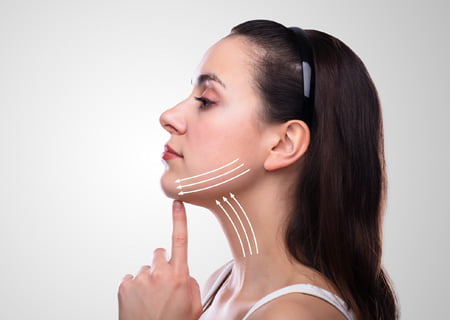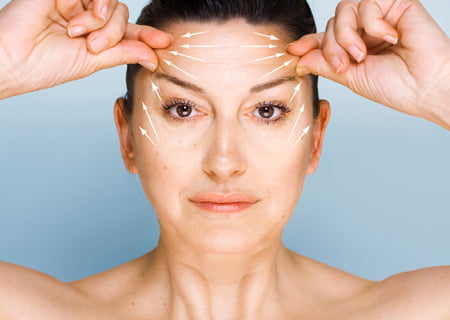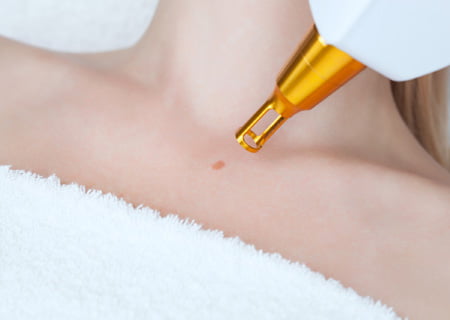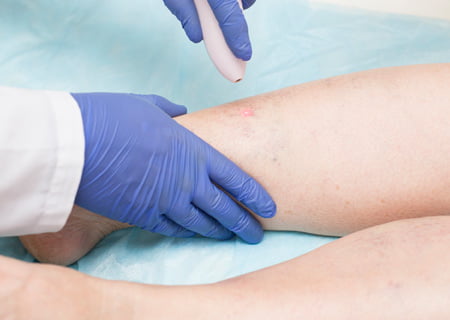How to Treat Unattractive Neck Bands

Unattractive neck bands, often referred to as "platysmal bands," can be a source of discomfort and self-consciousness for many individuals. These bands are vertical lines or cords that can appear more prominent with age, weight fluctuations, or genetics.
Addressing these concerns involves understanding the causes, exploring non-invasive treatments, and considering surgical options.
What are Neck Bands?
Neck bands, sometimes called platysmal bands, are lines or ridges you can see on the neck. These happen because of the platysma muscle, which runs from your jawline down to your collarbone.
People also search
As you get older, your skin loses elasticity and your muscles weaken, making these bands more visible.
Causes of Neck Bands
Several things can cause neck bands to form, including:
- Aging : As you age, your skin loses collagen and elastin, which leads to sagging skin and more noticeable muscle bands.
- Genetics : Some people are more likely to get noticeable neck bands because of their genes.
- Weight Changes : Gaining or losing a lot of weight can affect your skin’s tightness and muscle tone.
- Sun Exposure : Spending a lot of time in the sun can make your skin age faster, which can lead to neck bands.
Knowing what causes neck bands can help you choose the best way to treat them.
Non-Surgical Treatments for Neck Bands
If you want to avoid surgery, there are several non-surgical treatments that can help reduce neck bands. These include special skincare routines and treatments done by professionals.
Skincare Products
- Retinoids : These can help your skin make more collagen, which improves skin texture and reduces neck bands.
- Peptides : These strengthen your skin’s support structure, making neck bands less visible.
- Moisturizers and Sunscreens : Keeping your skin hydrated and protected from the sun helps maintain its elasticity and firmness.
- Botox Injections
Botox is a popular non-surgical way to treat neck bands. Small amounts of botulinum toxin are injected into the platysma muscle to make it less active, leading to a smoother neck.
Botox treatments are quick, with little discomfort and almost no recovery time.
Dermal Fillers
Dermal fillers can add volume to the neck and smooth it out. Fillers with hyaluronic acid work well to plump the skin and make neck bands less visible.
These treatments last about 6 to 12 months, and need regular touch-ups.
Laser Treatments
Laser treatments, like fractional CO2 lasers or intense pulsed light (IPL), can improve skin texture and boost collagen production. These treatments help tighten the skin, reducing the look of neck bands.
Multiple sessions are often needed for the best results, and some recovery time may be required.
Minimally Invasive Treatments
If you want more noticeable changes but don't want major surgery, minimally invasive procedures might be the right choice.
Micro-Needling
Micro-needling uses tiny needles and heat energy to tighten and rejuvenate the skin.
The needles make small holes in the skin, encouraging collagen production, making the skin firmer and reducing neck bands.
Surgical Treatments for Neck Bands
If non-invasive and minimally invasive treatments don't give you the results you want, surgery might be a more permanent solution. These procedures are usually done by certified plastic surgeons, and need a longer recovery time.
Neck Lift Surgery
A neck lift, also known as a lower rhytidectomy, is a surgery to remove extra skin and fat from the neck. This tightens the platysma muscle and repositions the remaining skin for a smoother, younger look. The results can last for many years.
Procedure Overview:
- Anesthesia: General anesthesia or intravenous sedation.
- Incisions: Usually made behind the ears and under the chin.
- Process: Removes extra skin and fat, and tightens the platysma muscle.
- Recovery : Takes about two weeks initially, with full results in several months.
Liposuction
Liposuction can be done alone or with a neck lift to remove extra fat from the neck area. This helps define the neck and jawline, making neck bands less noticeable.
Procedure Overview:
- Anesthesia : Local or general anesthesia.
- Incisions : Small cuts are made to insert the liposuction tool.
- Process: Suctions out excess fat, sculpting the neck.
- Recovery: Commonly involves swelling and bruising, with full recovery in a few weeks.
Platysmaplasty
Platysmaplasty targets the platysma muscle to reduce neck bands. The surgeon makes cuts under the chin or behind the ears to tighten or partially remove the muscle, getting rid of the bands.
Procedure Overview:
- Anesthesia : General anesthesia or intravenous sedation.
- Incisions: Made under the chin or behind the ears.
- Process : Tightens or partially removes the platysma muscle.
- Recovery : Similar to a neck lift , with initial recovery in two weeks and full results in several months.
Choosing the Right Treatment
Selecting the appropriate treatment for unattractive neck bands depends on various factors, including the severity of the bands, skin type, age, and personal preferences. Consulting with a qualified cosmetic surgeon or dermatologist is essential to determine the best approach for your specific needs.
Factors to Consider
- Severity of Neck Bands: Mild cases may respond well to non-invasive treatments, while more severe cases might require surgery.
- Skin Type and Condition : Different skin types respond differently to treatments; professional advice is crucial.
- Personal Preferences : Consider your comfort level with surgery, recovery time, and desired results.
- Budget: Costs vary widely between non-invasive treatments and surgical options.
Consultation with a Professional
During your consultation, a cosmetic surgeon will evaluate your neck bands, discuss your goals, and recommend the most suitable treatment options. This personalized approach ensures that you receive the best possible care and achieve the desired outcomes.
All in all, unattractive neck bands can be effectively treated through a variety of methods, ranging from non-invasive treatments like Botox and dermal fillers to surgical options such as neck lifts and platysmaplasty. Understanding the causes and available treatments is the first step in making an informed decision about the best approach for your needs.
If you're considering treatment for unattractive neck bands, trust the expertise of Facial Cosmetic Surgery . Dr. Kristina Zakhary is dedicated to helping you achieve a more youthful and confident appearance.
Contact us today to schedule a consultation and take the first step towards a rejuvenated neck and renewed self-confidence.
















